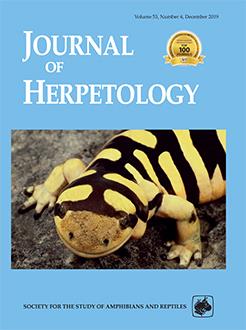Lithobates johni and Lithobates berlandieri have, respectively, a restricted and a wide geographic distribution, and cohabit in the center of the Atlantic versant of Mexico. We analyze and compare the feeding habits of these two syntopic species, specifically evaluating differences in trophic niche breadth and overlap between sexes (L. johni = 35 females and 30 males; L. berlandieri = 25 females and 26 males) and seasons (L. johni = 45 from wet and 20 from dry seasons; L. berlandieri = 17 from wet and 34 from dry seasons). Both L. johni and L. berlandieri showed generalist feeding habits and were found to consume mainly arthropods; however, they also consumed vertebrates. In the wet season, L. johni males had higher stomach volume content than females, and L. berlandieri females had higher stomach volume content than males. In the dry season, L. johni females had higher stomach volume content than males, and a similar pattern was seen between sexes in L. berlandieri. Trophic niche breadth and dietary diversity were higher in L. berlandieri than in L. johni for both seasons. There was no trophic segregation between species in either season (wet or dry); however, we suggest that the differences in prey type consumed, dietary diversity, and trophic niche breadth might explain the coexistence of L. johni and L. berlandieri in the study area.
How to translate text using browser tools
31 October 2019
Variation in Feeding Habits between Two Syntopic Frog Species (Genus Lithobates) of a Tropical Habitat in the Atlantic Versant of Mexico
Raquel Hernández-Austria,
Ricardo Luría-Manzano,
Aurelio Ramírez-Bautista
ACCESS THE FULL ARTICLE

Journal of Herpetology
Vol. 53 • No. 4
October 2019
Vol. 53 • No. 4
October 2019




